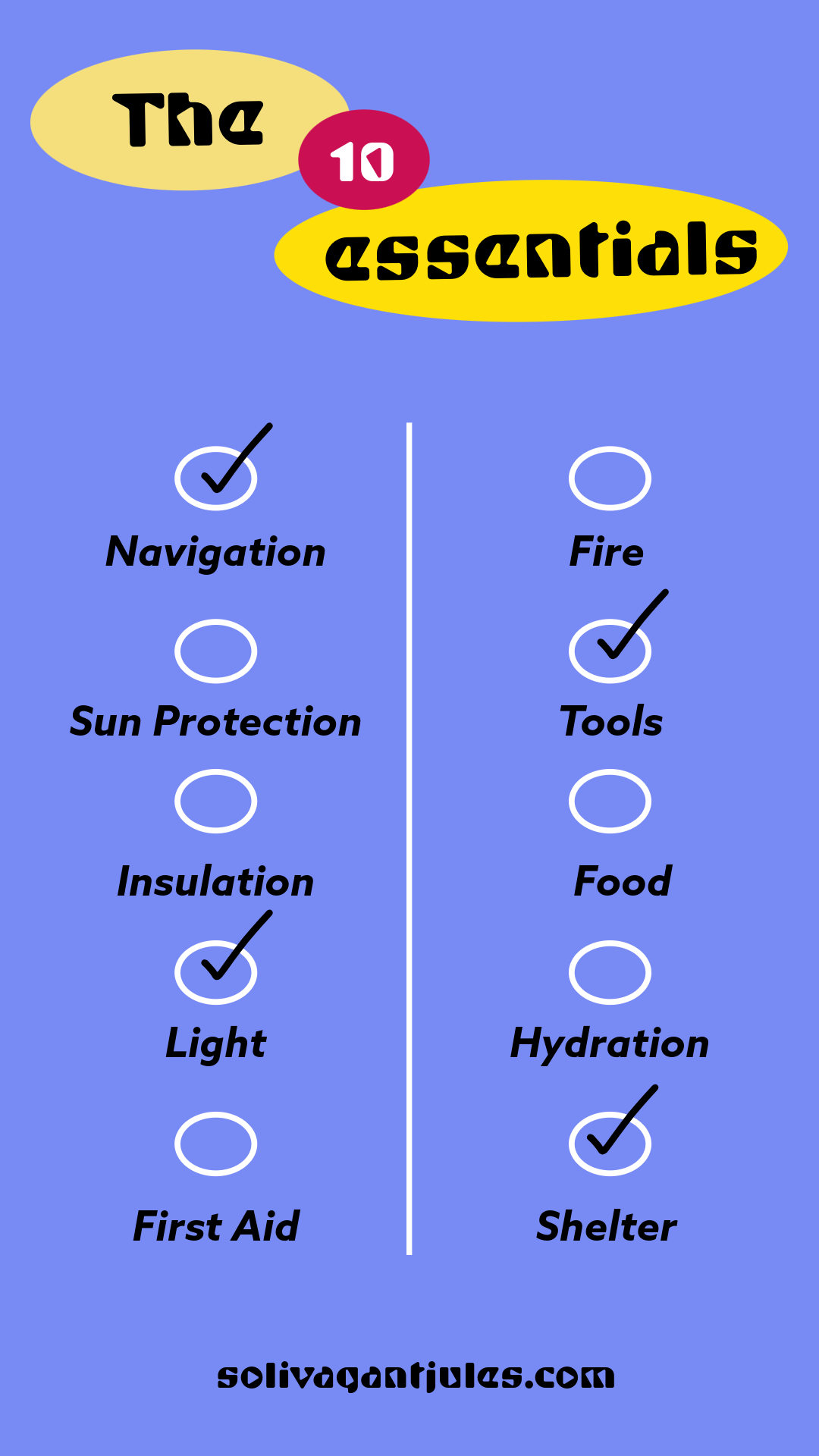A quick overview of the 10 essentials
When embarking on a hike into the backcountry, it's crucial to be prepared for any situation. The 10 essentials are a set of recommended items that first appeared in print in the third edition of Mountaineering: The Freedom of the Hills. These give you safety, comfort, and self-sufficiency in the wilderness. Ultimately, carrying these 10 essentials helps ensure that you are prepared for the unexpected, whether it's a sudden change in weather, getting lost, or encountering an emergency. Always tailor your kit to the specific conditions and duration of your hike. Read more on NPS’s website.
Here's a quick overview of these essential items:
Navigation
Tools: Map, compass, and GPS device.
Purpose: To prevent getting lost and to help you find your way back.
Light
Tools: Headlamp or flashlight with extra batteries.
Purpose: For illumination in low-light conditions or emergencies.
Sun Protection
Tools: Sunglasses, sunscreen, and a hat.
Purpose: To protect your skin and eyes from harmful UV rays.
First Aid Kit
Tools: Basic first aid supplies, including bandages, antiseptic wipes, and medications.
Purpose: To treat injuries and manage medical emergencies.
Tools
Tools: A versatile multi-tool or knife, stuff to repair gear.
Purpose: For cutting, repairing gear, and other utility purposes.
Fire
Tools: Matches, lighter, and fire starter.
Purpose: For warmth, signaling, and emergency situations.
Shelter
Tools: Emergency bivy, lightweight tarp, or space blanket.
Purpose: To provide protection from the elements in case you need to stay overnight unexpectedly.
Extra Food
Tools: Non-perishable, high-energy snacks or meals.
Purpose: To sustain energy and provide nutrition in case the hike takes longer than expected.
Hydration
Tools: Additional water and a means to purify water (filters, tablets).
Purpose: To stay hydrated and prevent dehydration, especially on longer hikes.
Insulation
Tools: Layers of clothing appropriate for the weather, including a rain jacket and insulating layers.
Purpose: To stay warm and dry in changing weather conditions.


